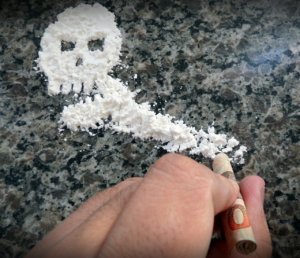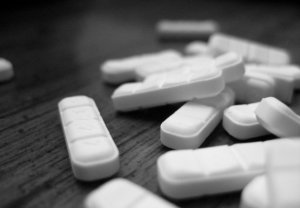
What is a Controlled Substance? – A controlled substance is any substance legally regulated in the United States under the Controlled Substances Act (CSA). The CSA is a statute legislated during the Nixon presidency as part of the Comprehensive Drug Abuse Prevention and Control Act of 1970. The CSA established a federal drug policy to govern the manufacture, possession, distribution, use, and importation of certain substances.
Per the CSA, such substances are classified into a five-tier organization, with each classification referred to as a “schedule.” The U.S. Drug Enforcement Administration schedules substances according to how useful they are for medical practice, their potential for abuse and habit formation, and their overall danger to society.
Before the CSA was legislated, drug control laws were non-uniform, non-universal, and decentralized, and administered at the local or state level. The purpose of the CSA was to unify all these disparate drug laws into a single structure, amendable and adaptable for the future.
What is a Controlled Substance? -Scheduling of Controlled Substances
Schedule I Controlled Substances
Schedule I substances are those deemed to be the most dangerous drugs available. As such, drugs in this class are of the highest priority for the government to exert control over. Substances in this class currently have no accepted medical uses and are exclusively produced and distributed unlawfully for recreational purposes.
Most Schedule I drugs have very significant abuse potentials. Nonetheless, some Schedule I drugs are not as addictive or dangerous to society as some drugs of Schedule II but are scheduled higher because they lack any authorized medical applications in the United States.
Examples of Schedule I substances include the following:
- DMT
- LSD
- GHB
- Ecstasy
- Mescaline
- Peyote
- Psilocybin
- Marijuana
- Heroin
Heroin is one of most well-known examples of a Schedule I controlled substance and is scheduled as such because it is commonly considered one of the most addictive substances available. On top of this, heroin makes up a significant percentage of illicit drug traffic, which poses a threat to the general stability and safety of the communities through which it passes. Heroin was first synthesized as a less-addictive alternative to morphine, but medical use of heroin was discontinued when ironically, it proved even more addictive than morphine.
Schedule II Controlled Substances

Controlled substances under Schedule II have some recognized medical applications, unlike Schedule I drugs. However, Schedule II drugs are strictly regulated because they are typically extremely addictive, cause chemical dependence, and known to be regularly abused. Medications under Schedule II are prescribed with caution, using single-use prescription which must be rewritten for each refill to prevent potential drug diverters from faking illnesses to acquire and sell Schedule II substances.
Examples of Schedule II substances include the following:
- Methadone
- Methamphetamine
- Morphine
- PCP
- Codeine (products containing > 90 milligrams)
- Fentanyl
- Hydrocodone
- Oxycodone
- Adderall
- Cocaine
Cocaine is one of the most well-known Schedule II substances. Despite cocaine’s societal branding as an illegal, highly-addictive recreational drug, cocaine does indeed have some narrow medical applications, primarily as a potent topical anesthetic. Cocaine is extremely addictive, and, like heroin, constitutes a sizeable portion of the illegal drug trade.
Schedule III Controlled Substances
Schedule III drugs have approved medical uses in the United States. When a schedule III substance exhibits any potential for abuse, it is less than that of Schedule I or II substances. Drugs of Schedule III may produce a moderate state of chemical dependence, along with moderate to severe psychological dependence.
Examples of Schedule III substances include the following:
- Anabolic steroids
- Testosterone
- Ketamine
- Codeine (products containing < 90 milligrams)
- Benzphetamine
- Phendimetrazine
Ketamine has a history of non-medical use as a club drug dating back to the early 1970s. Ketamine was initially synthesized in 1962 as a milder alternative to phencyclidine (PCP). As a recreational drug, Ketamine is often called “Special K,” and is desired because it induces a sedated, trance-like state.
Schedule IV Controlled Substances

Schedule IV drugs have an even lower potential for abuse, illicit use, and capacity to cause a physical or psychological dependence than those under Schedule III – this does not mean they aren’t dangerous, however.
Schedule IV substances have approved medical applications but because they still have the potential for abuse and dependence, they are regulated, albeit less strictly that drugs in Schedules I through III.
Examples of Schedule IV substances include the following:
- Ativan
- Xanax
- Klonopin
- Darvocet
- Valium
- Ultram
- Librium
- Halcion
- Lunesta
- Versed
- Sonata
- Ambien
- Soma
- Provigil
- Motofen
Schedule IV is mostly comprised of benzodiazepines (benzos) and ‘Z-drugs’, which are non-benzos that exhibit similar effects to benzos. Benzos are relatively common and consist of numerous chemical compounds and brand names. Benzos are minor sedatives that are abused recreationally to produce a calm, comfortable, warm sensation.
Schedule V Controlled Substances
Relative to the drugs within the previous four schedules, Schedule V substances have a very low potential for abuse, though they can be abused, nevertheless. Like drugs in Schedules II through IV, Schedule V substances have accepted medicinal applications, but have a considerably lower risk for causing physical or psychological dependence. For this reason, Schedule V drugs, despite being controlled legally, are more readily prescribed with fewer restrictions and oversight.
Examples of Schedule V substances include the following:
- Lyrica
- Lomotil
- Trobalt
- Briviact
- Vimpat
- Pyrovalerone
- Robitussin AC (with codeine)
Schedule V drugs generally have mild or moderate antitussive, antidiarrheal, anticonvulsive, stimulant, and analgesic properties. Likewise, Schedule V also consists of some medicines containing a limited quantity of narcotic medication alongside nonnarcotic ingredients, with less than 200 milligrams of codeine per 100 grams. Preparations such as Robitussin AC are very widespread and well-known.
What is a Controlled Substance? – Treatment for Drug Addiction
Drug addiction is a life-threatening condition that not only affects the individual but everyone around him or her. We offer comprehensive, evidence-based treatment in the form of behavioral therapy, counseling, and group support. Our clinical staff has expertise in addiction and provide clients with the tools they need to recover and sustain long-term wellness and sobriety.
Our programs are customized to each client’s needs and are available in residential (inpatient), partial hospitalization, and intensive outpatient formats. After formal treatment is completed, former clients can take advantage of aftercare planning for ongoing therapy and alumni activities that foster continual peer support.